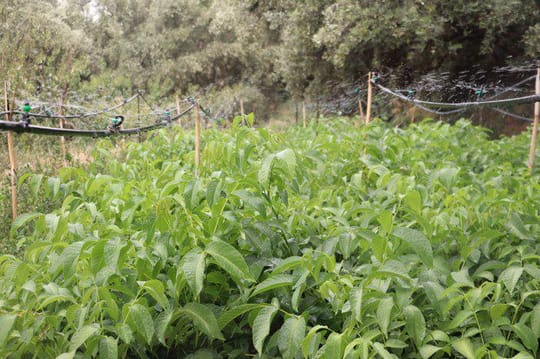Agricultural Development in Morocco Flourishes

Agricultural Development in Morocco Flourishes, Borgen Magazine.
WESTBURY, New York — The High Atlas Foundation is helping Morocco’s local communities determine how they choose to develop their land and grow out of poverty sustainably. Like those in the northern Atlas Mountains, Morocco’s most vulnerable communities have long suffered from water scarcity, shaky access to land and unregulated grazing rights. These hardships make it difficult for many individual planters to harvest profitable yields on their produce and further strain their labors. Also, their reliance on traditional and overplanted crops like barley, corn and dates deliver low profits. Additionally, they exasperate a low diversity of fruits and vegetables in the poorest of the nation’s regions. While Morocco’s red fruit production saw an increase of 84% last year, many of the nation’s poorest farmers were not included in the agricultural boom. Yet, one organization is working to reverse this in a new sustainable development model, improving agricultural development in Morocco.
The High Atlas Foundation
Peace Corps volunteers who served in Morocco founded The High Atlas Foundation in 2000. They committed themselves to sustainable development through several human development initiatives. These included sustainable agriculture, education, health and women’s empowerment. Working with local and international institutions, the High Atlas Foundation works to facilitate development through participatory planning.
The Borgen Project spoke with Dr. Yossef Ben Meir, The High Atlas Foundation’s Founder and President, in an interview to learn more about the High Atlas Foundation’s approach to sustainable development and advocacy. “I’m a former Peace Corps volunteer who served in Morocco in the early 90s, and others, having gone through that two-year experience, were moved in terms of the severe life challenges of particularly rural communities,” said Dr. Yossef Ben Meir. “A number of us founders served in mountainous areas. I served in the south side of the High Atlas region.”
Agricultural Land Struggles
Unfortunately, 70% of agricultural land only generates 10 to 15% of agricultural revenue in rural regions, and 80% of arable lands are located in arid or semi-arid areas. Still, only 15 percent of the country’s lands are irrigated. Ben Meir says the dependence on the traditional subsistence approach to growing barley and corn keeps people down. He says the potential for waterborne diseases, high unemployment and a lack of access to basic government services is a barrier for rural families. The transition from barley and corn to more lucrative fruit trees and medicinal plants may have challenges.
“80% of rural incomes comes from agriculture,” said Ben Meir. “Most people who experience poverty in Morocco are in rural places and overcoming this dependency on or generational reliance on barley and corn. It’s one of many factors that have to be addressed in the agricultural value chain, but one of them is the generation of fruit trees so that farmers and farming families can make that transition.”
Steps Taken
Most recently, the foundation is taking several steps to foster deals to reallocate government land and organize a community-based approach to fruit tree planting, aiding agricultural development in Morocco. Today Ben Meir and his teams help manage 13 tree nurseries that care for over 1.6 million saplings. He says a modest investment into the way planters harvest their crops can profoundly impact people’s lives. It allows more locals to better participate in the local economy.
“It’s also the exposure that we had to community planning,” said Ben Meir. “The beneficiaries of the projects when they determine the project design and form and location and what it is and how it will be managed and evaluated when they’re in control of it, it has a longer life and sustainability if you will.”
Ben Meir says these experiences embody the foundation’s original mission to facilitate participatory community planning towards development initiatives. In this sense, local communities play a crucial role when creating and implementing a project. The foundation uses a process called Imagine, a four-day or 32-hour program of personal and group introspection. Afterward, multiple sessions focus on the community planning of projects. They then implement development initiatives requiring accelerating revenue streams and beneficiaries. For example, the monitoring and certifying of trees to generate carbon offset credits. They can commercialize and reinvest in their projects. Teams like these allow the foundation to generate enough revenue to be financially stable alongside other advocacy efforts.
Sustainable Projects
The High Atlas Foundation understands the importance of creating sustainability projects. For instance, technology like renewable solar pumps helps power the 13 nurseries, facilitating a zero-waste version of sustainability. Ben Meir says the foundation takes zero waste extremely seriously, not only in terms of energy but also in biomass. For example, something as simple as renewing wasted walnut shells could further progress the foundation’s goal.
Recently The High Atlas Foundation implemented the USAID Farmer-to-Farmer Program in Morocco. The program helps create opportunities for cooperatives along the agricultural value-chain by using local and U.S. experts, improving agricultural development in Morocco. Additionally, it created the Religious and Ethnic Communities project, an interfaith community organization that shares stories and narratives that capture the human experience of intercultural exchange and interfaith relationships. Ben Meir says these experiences are an inescapable aspect of Moroccan history and life. Alongside their development projects, they can pave the way for interfaith and intercultural narratives to flourish like their trees.